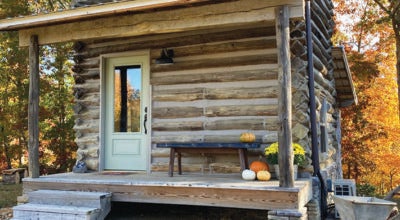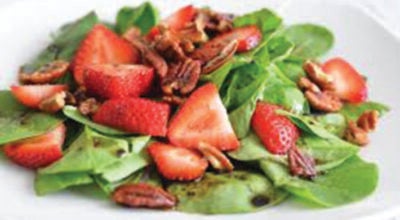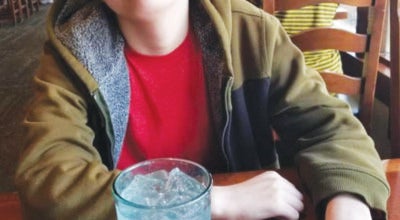New Series: Mothers of the Presidents of the United States
Published 9:49 am Friday, January 6, 2023
|
Getting your Trinity Audio player ready...
|
Editor’s Note: Following is the first in a serious about the mothers of our country’s Presidents, written by local Presidential scholar, Betty West.
Betty Etchison West
For the Enterprise
People have asked me to write about the children of the Presidents of the United States. I don’t have enough information about those children to write about them, but I decided after looking at my books that I would write about the mothers of presidents of this country.
There is often a good deal of information about the mother of a president in his autobiography or biography. There are complete books about a number of mothers of presidents, Rose Kennedy, for example.
The plan is that this article will be followed by others, but there are always questions about what a 90-year-old will get done.
George Washington’s mother comes across as a person with whom it was difficult to deal.
There seemed to be a rift between George and his mother. Nothing that George did seemed to please her, and one gets the idea from the information about her that George just handled the situation by avoiding her.
George did build or buy his mother a house in Fredericksburg, Va. That house, at 1200 Charles St. , is open to visitors every day except Tuesday. Call 546-373-1569 for more information,
In addition to disapproving of most everything that George did, Mary Washington often made frivolous demands. One story says that while George was fighting a battle when his mother sent word that she wanted him to get her some butter; that sure seems a pretty frivolous request. That request was no doubt ignored.
George was embarrassed when his mother asked the Virginia House of Delegates for a pension. He got that request squashed. Mr. Washington seemed quite willing to give his mother what she needed—money or whatever, but it seemed that he never knew what she would be wanting/doing next.
That is probably why George handled the situation by having as little contact with his mother as possible. The docent at the Mary Washington House said that George and his mother got along better than some of the historians seem to indicate. That may be true because information about the relationship between George Washington and his mother is hard to find. Mary Washington, the mother of George Washington, died a few months after her son was inaugurated as President.
There is not much information available about the mother of the second President, John Adams. John’s mother’s name was Susanna Boylston, from a prominent New England family, but maybe illiterate because in the early 1700s it was believed that girls did not need an academic education. They only needed to know how to manage a household and how to care for their children. Deacon Adams, the father of John Adams, was educated. He attended Harvard, which is the same school attended by his son. The reason that it is believed that Susanna Boylston Adams could not read is that historians noted in their writings that Deacon John and his son read to Susanna. Even if she was illiterate, that lady evidently learned what she needed to know to raise a son who helped set up the government for the new nation, which became the United States of America, and then who became the second president of that nation.
There is not a bit more known about the mother of the third President of the United States, Thomas Jefferson, than there is about the mother of the second.
Jefferson’s mother, Jane Randolph, was born in England in 1720. By 1725, the Randolph family had migrated to Virginia. It is believed that Jane was educated at home, probably with the emphasis on managing a household and caring for a family, but she may also have received a rudimentary academic education.
In 1739, Jane Randolph married Peter Jefferson. Jane and Peter Jefferson had 10 children. According to information available, the Jeffersons lived a somewhat privileged life, but that may have changed when Jane’s husband, Peter, died in 1757, when the couple had been married only 18 years. When her husband died, Jane was left with children ranging in age between 17 years and 22 months.
She had learned the lessons about managing a family and household well because when her husband died she was left an estate, which included 2,750 acres of land and 66 slaves and also some hired laborers. She seemed to have handled both the plantation and her family well.
Even though there was not much written by Thomas Jefferson about his mother, he must have had great respect and love for her because he lived at her home, Shadwell, until he moved to Monticello. The fact that there is no correspondence left between Thomas Jefferson and his mother really does not mean much because there is not much remaining Jefferson correspondence left.
It is believed that Jane Jefferson instilled in her son, Thomas, his love for the finer things of life, music, art, the written word, etc. Some historians believe that Jane should also be credited for her son’s success as a statesman and his writing abilities. Jane was living at Monticello with Thomas Jefferson and his wife, Martha, when she died, and she is buried in the Monticello cemetery.
Nelly Conway, the mother of the fourth Presiden, James Madison, was born at Belle Grove Plantation, in Port Conway, Va. to wealthy parents. In 1749 she married James Madison Sr., whose family also owned a large plantation. In 1751, James Madison Jr. was born. James and his parents lived with his Madison grandparents. Historians note that both of James Madison Jr.’s parents had significant influence over him.
James’ education, whose first teacher was his mother, started early. He then had a Scottish teacher, named Donald Robertson, between the ages of 11 and 16. He studied mathematics, geography, languages, particularly Latin. He had a teacher at Montpelier, Rev. Thomas Martin, to help prepare him to enter the College of New Jersey, now called Princeton.
James Madison, Jr.’s mother made sure that James had every educational opportunity available at that time. His education, which had started when he was quite young, continued throughout his life because he spent hours reading and studying even after he moved back to Montpelier, his plantation, after serving as President.
Nelly Conway Madison, who had such considerable influence over her son, lived with James Jr. even after he married Dolley Payne Todd. While living under the same roof as her son, Nelly Madison maintained her own household, including her own staff, kitchen and garden. The house, called Montpelier, where James and Dolley lived with his mother was/is a big house so Nelly Conway Madison was able to live under the same roof with her son and his wife and still maintain her own household. James Madison’s Mother died at Montpelier and is buried there at the Montpellier Family Cemetery beside her husband, James Madison, Sr.
There is even less information about Elizabeth Jones Monroe than there is about the mothers of the first four Presidents of the United States. Elizabeth Jones, James Monroe’s mother, was born in 1730, and she married Spence Monroe in 1752. She died in 1774 when her son James Monroe was only 16. James’ father died two years later. James’ uncle became his surrogate parent. Information about Monroe’s early life including his education is most non-existent. He was able to enter the College of William and Mary so he evidently went to school when he was young, but the details of his education are not available.
James left school to join the fight against the British during the Revolutionary War. He later received help and education from Thomas Jefferson, who remained his friend for life.
Monroe’s parents are buried in Westmoreland County, Va. Even though little is known about James parents’ influence on their son, they must have exerted a great deal. A 2018 poll of historians ranked James Monroe as No. 18, quite a high rating.





